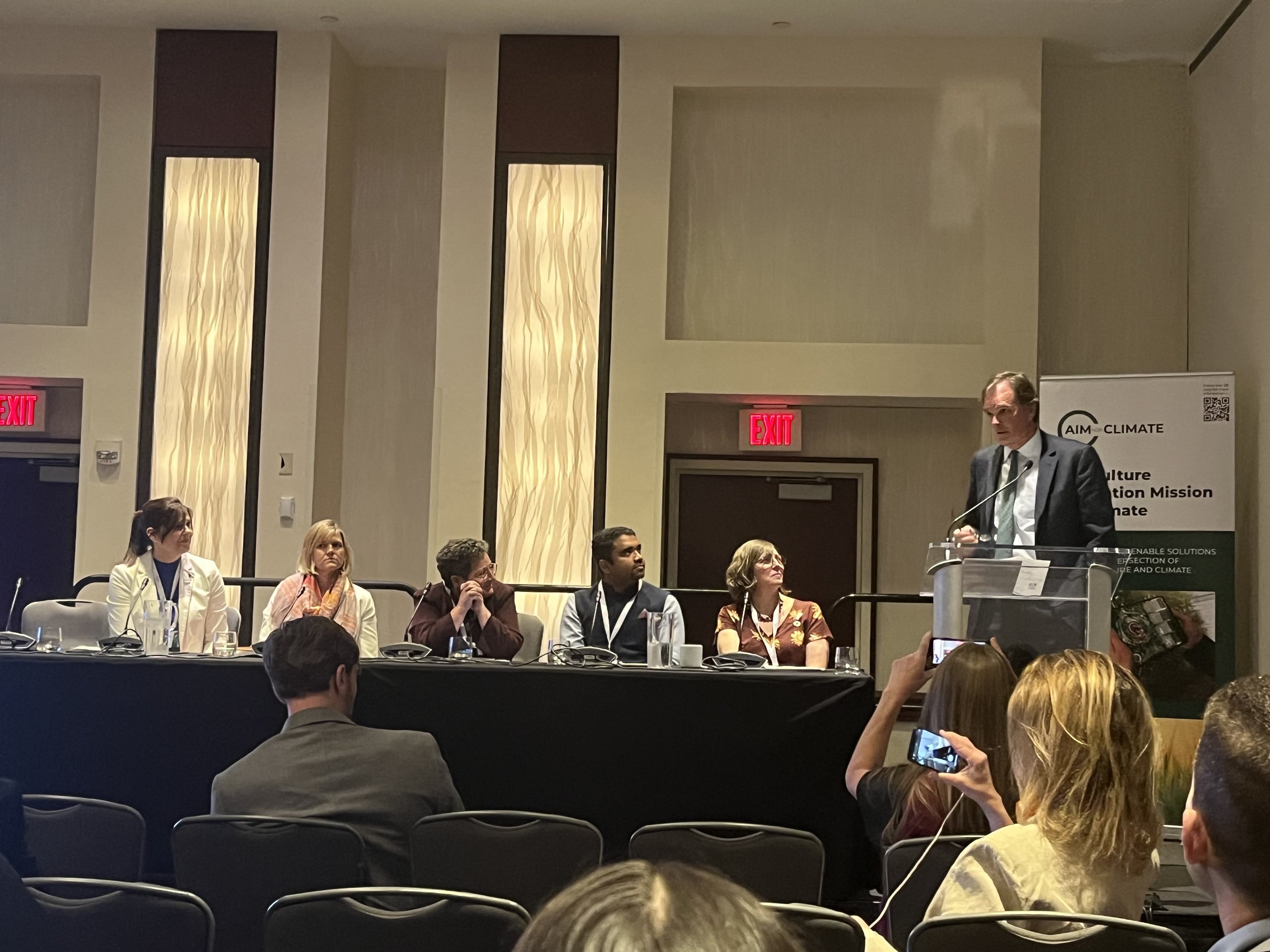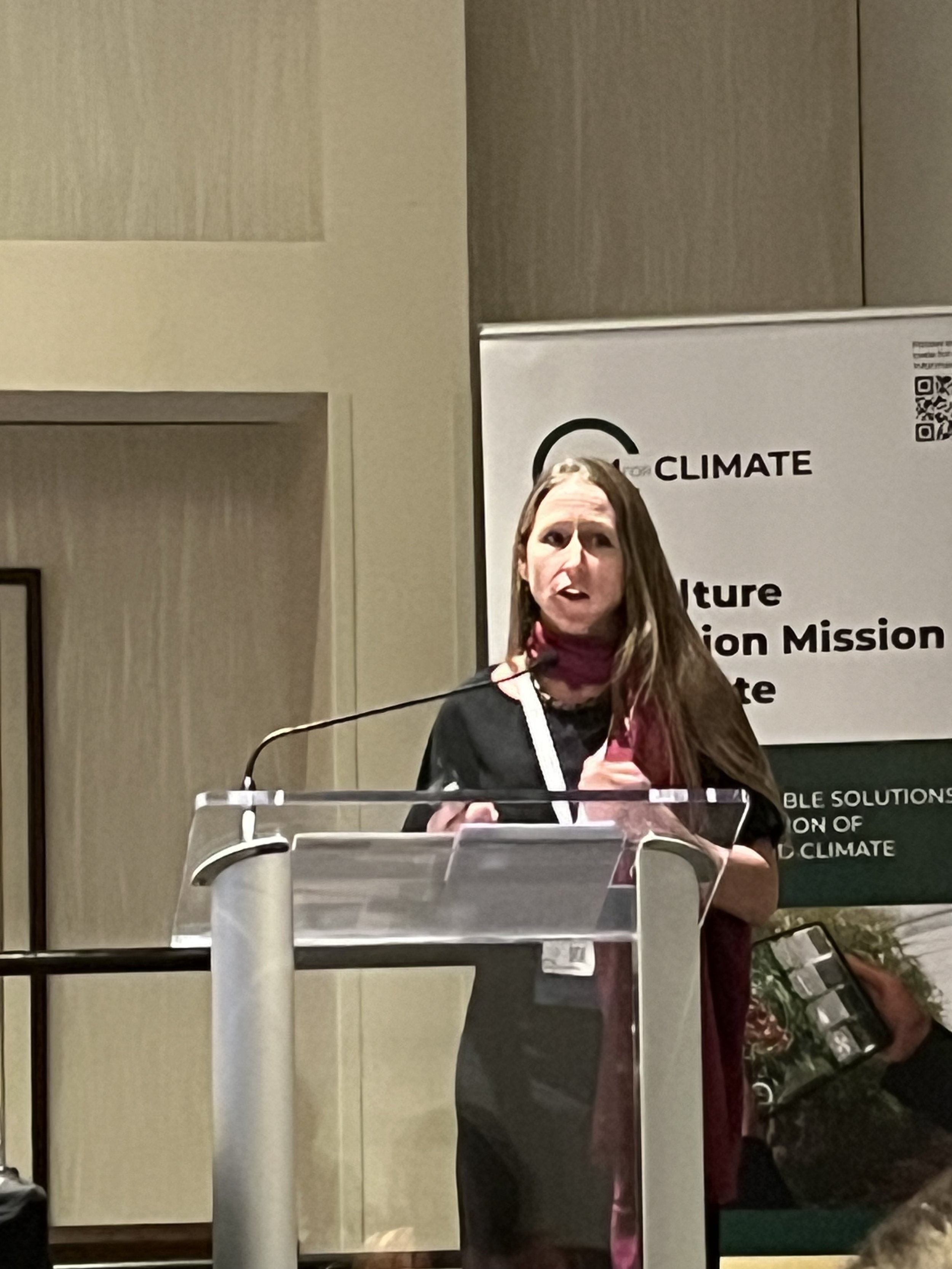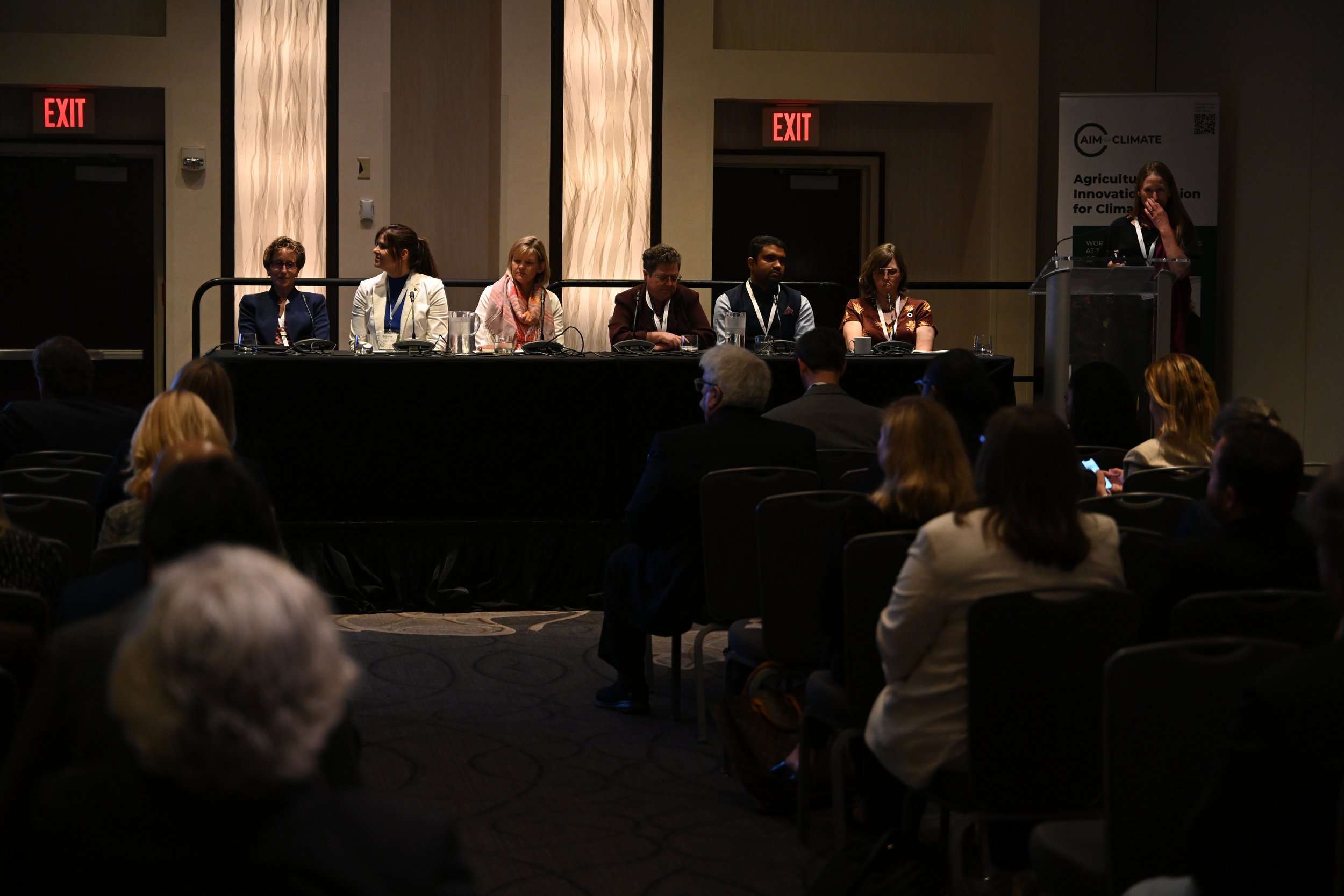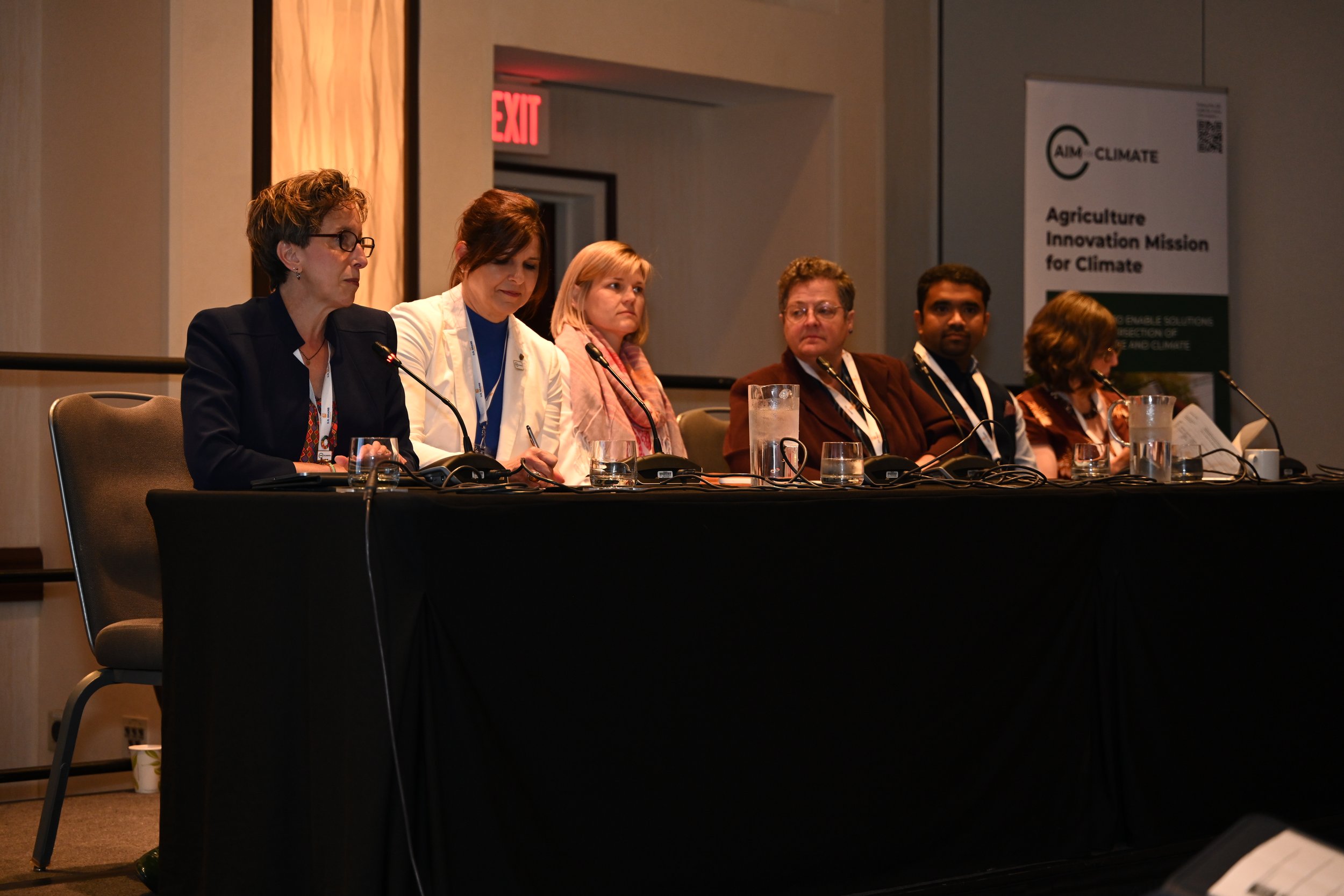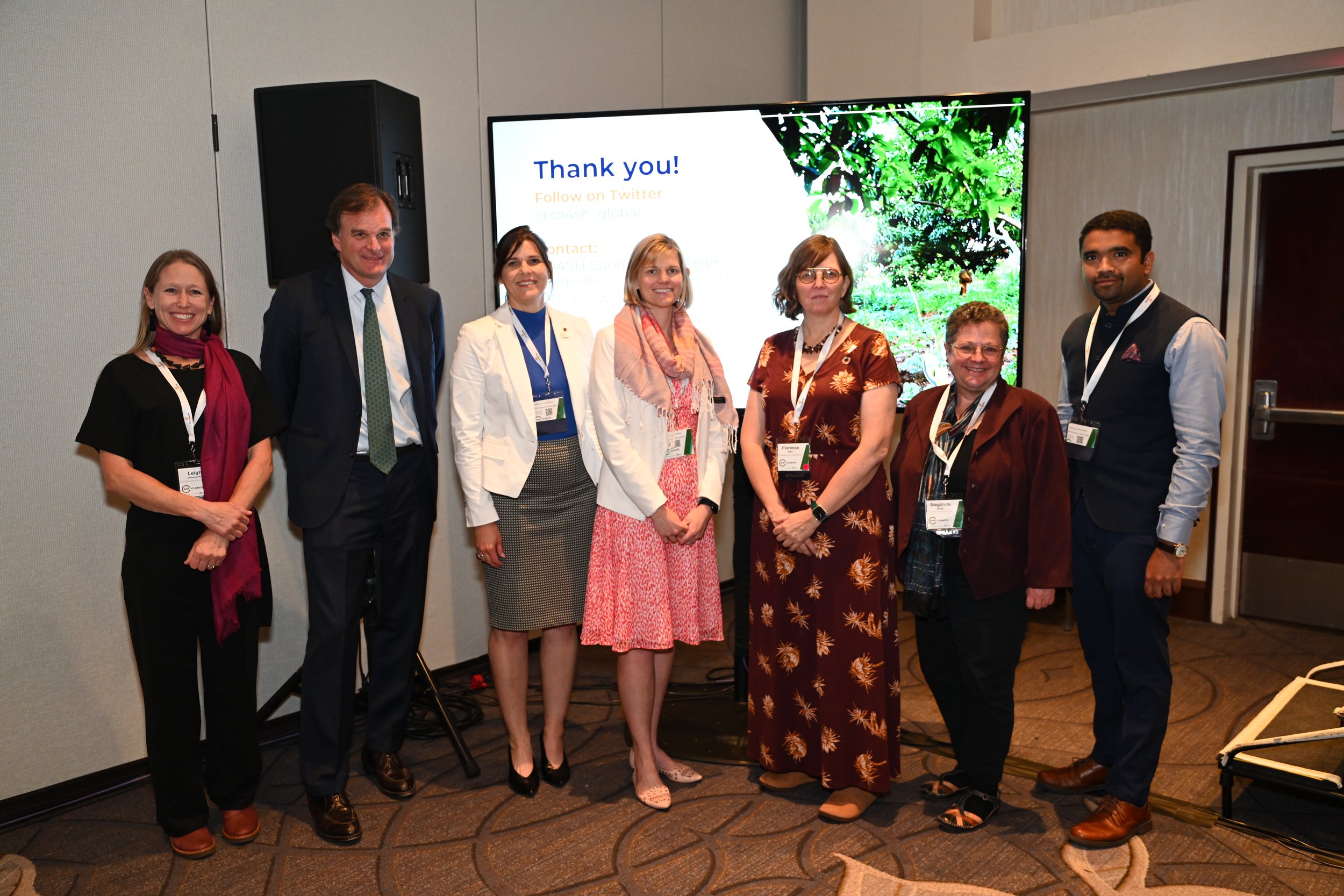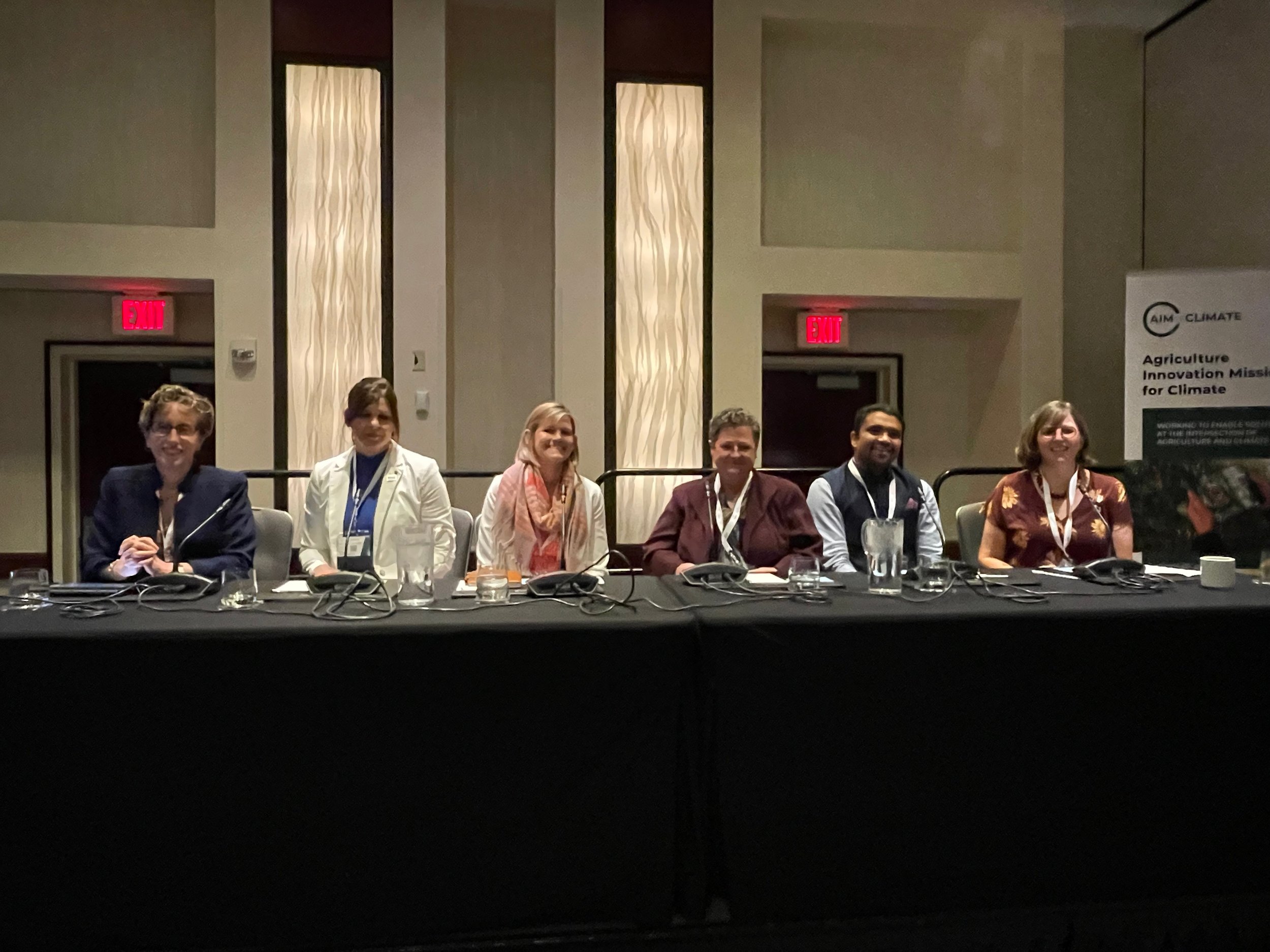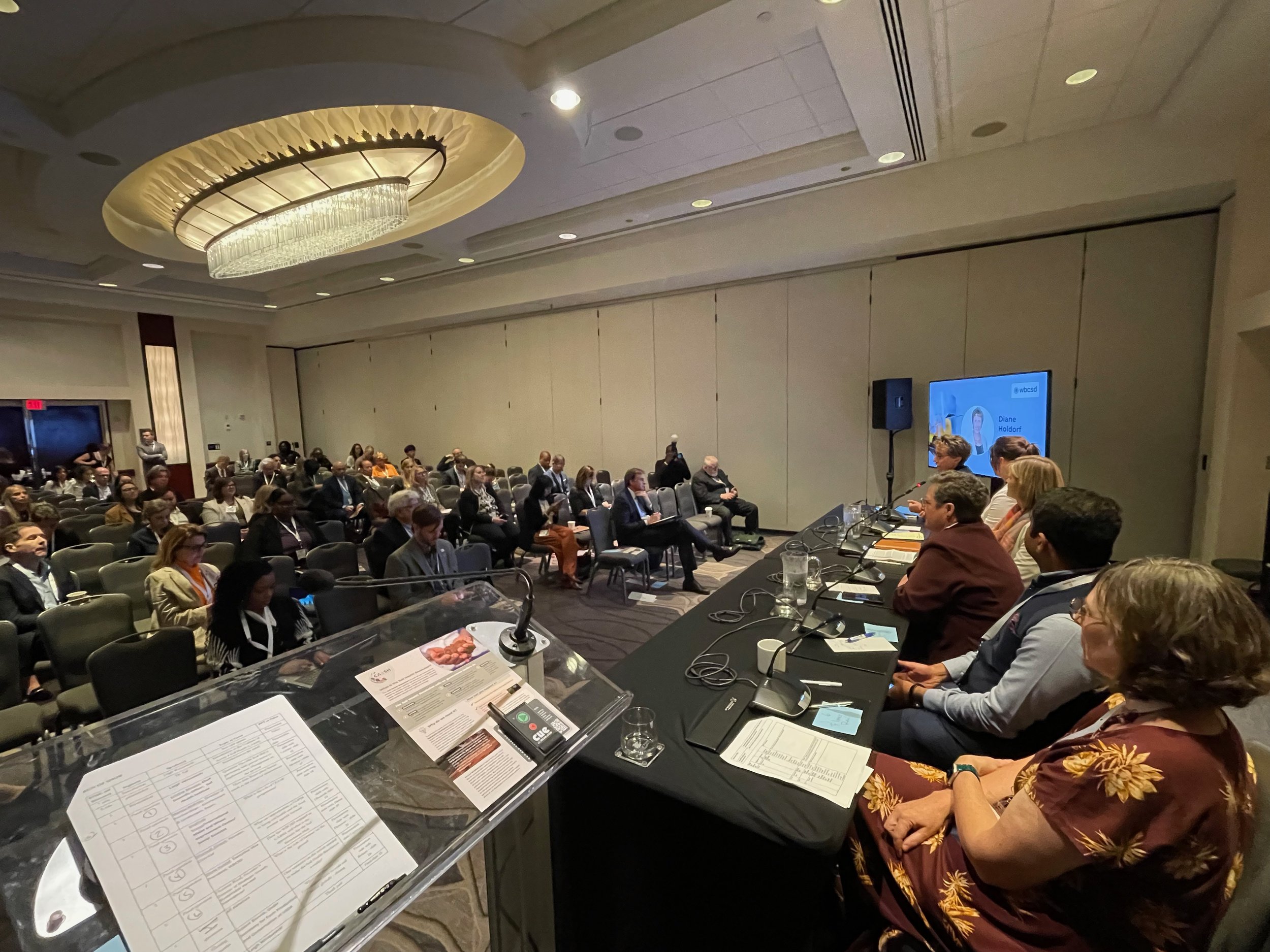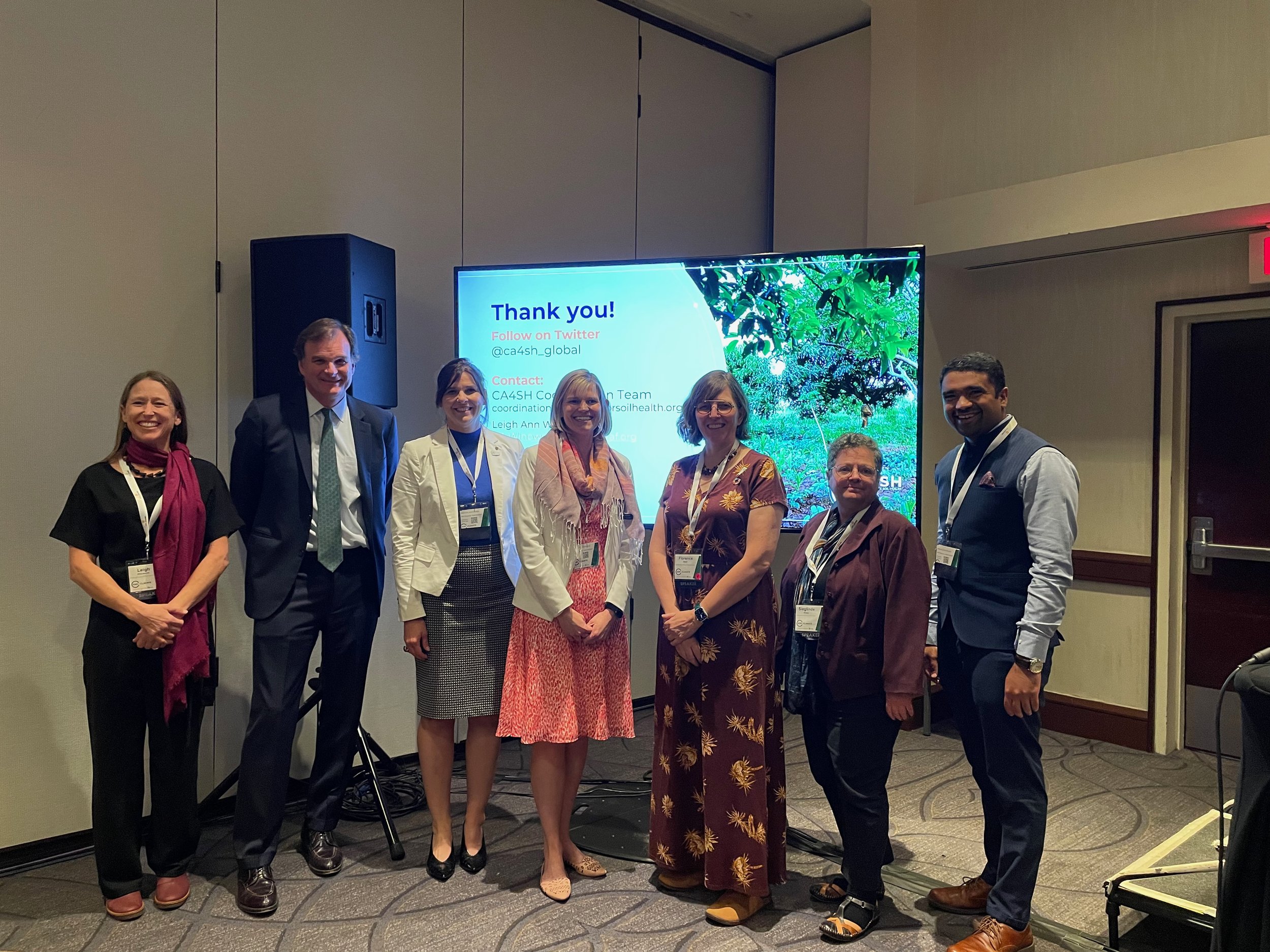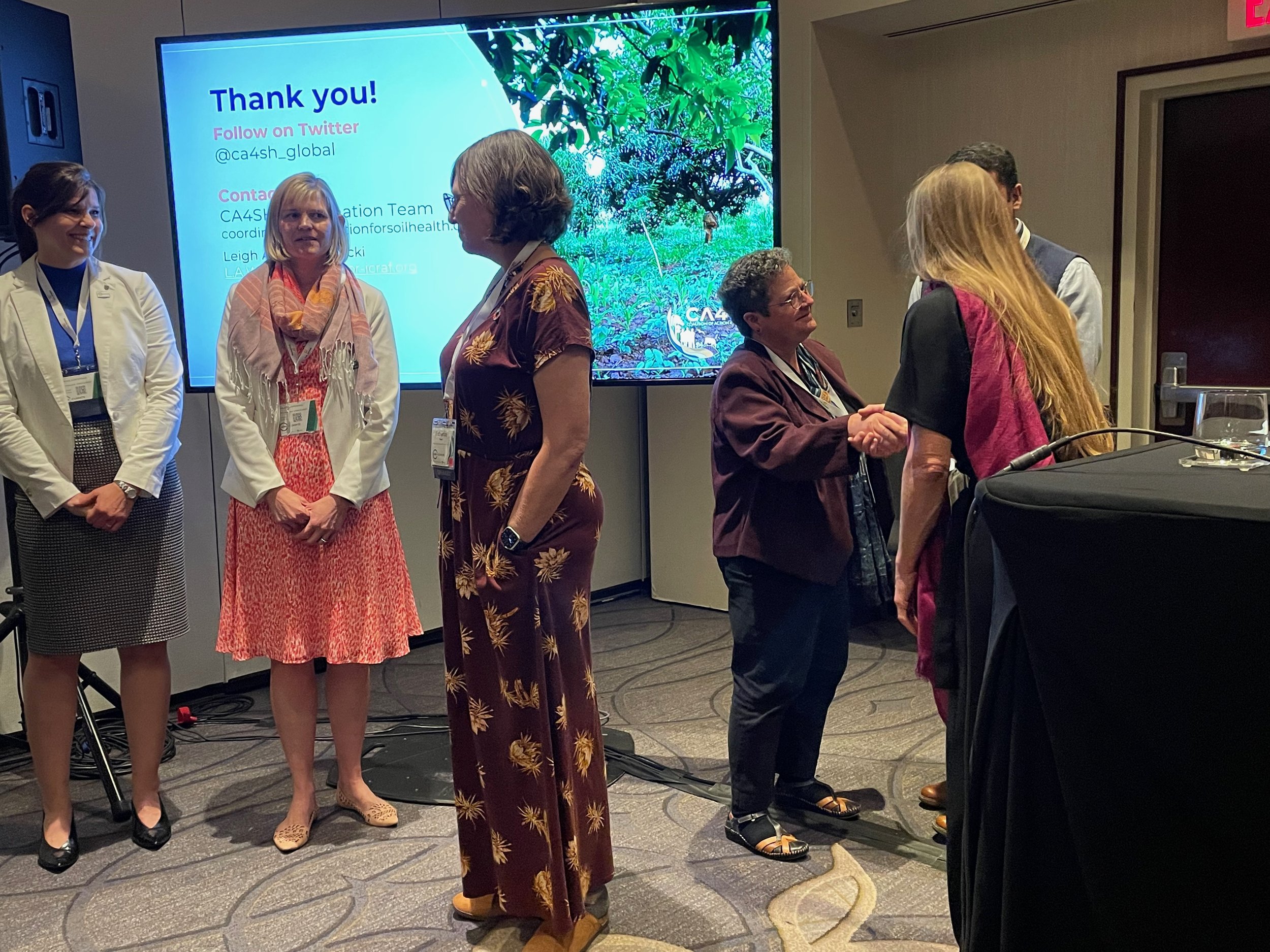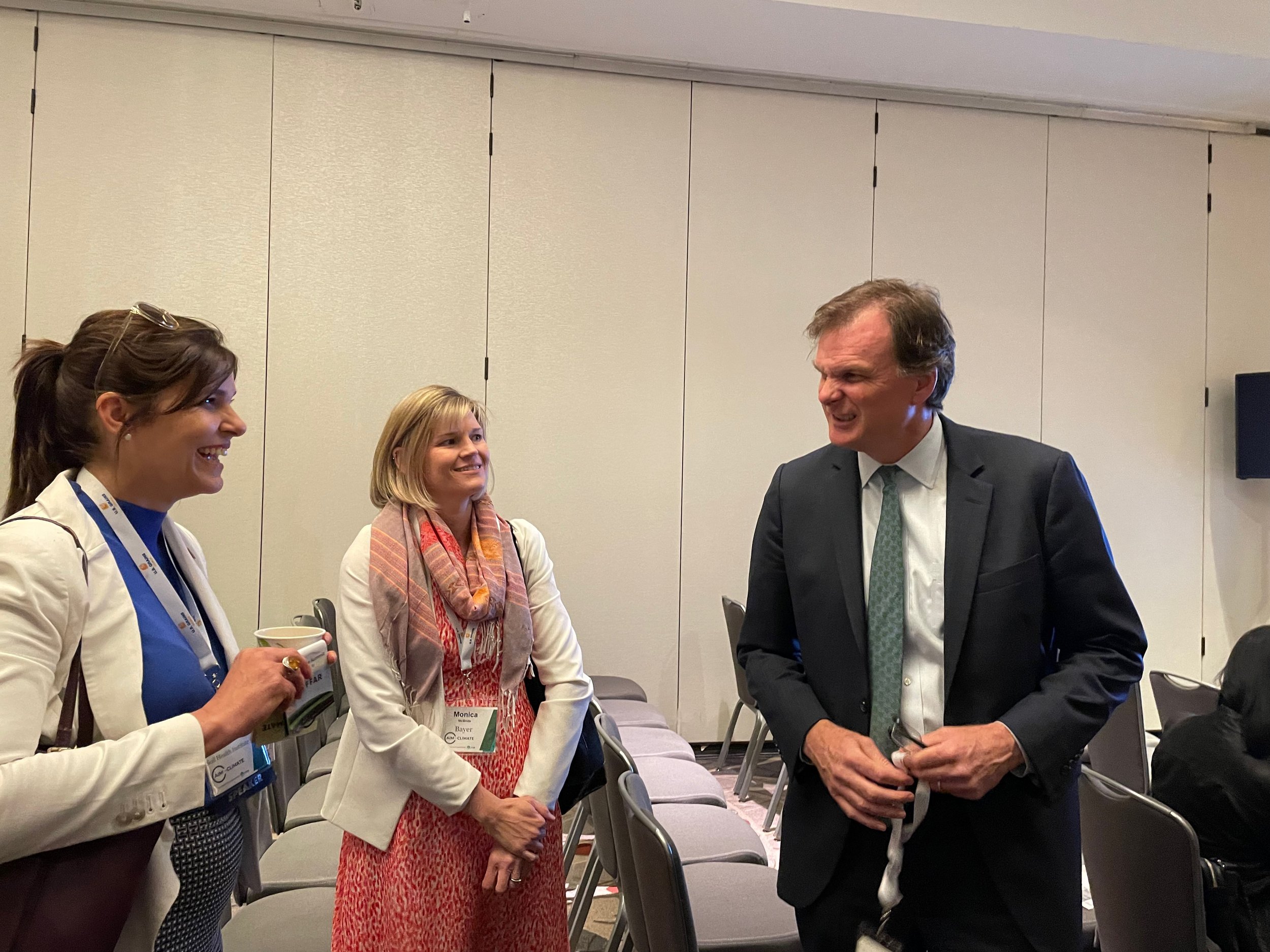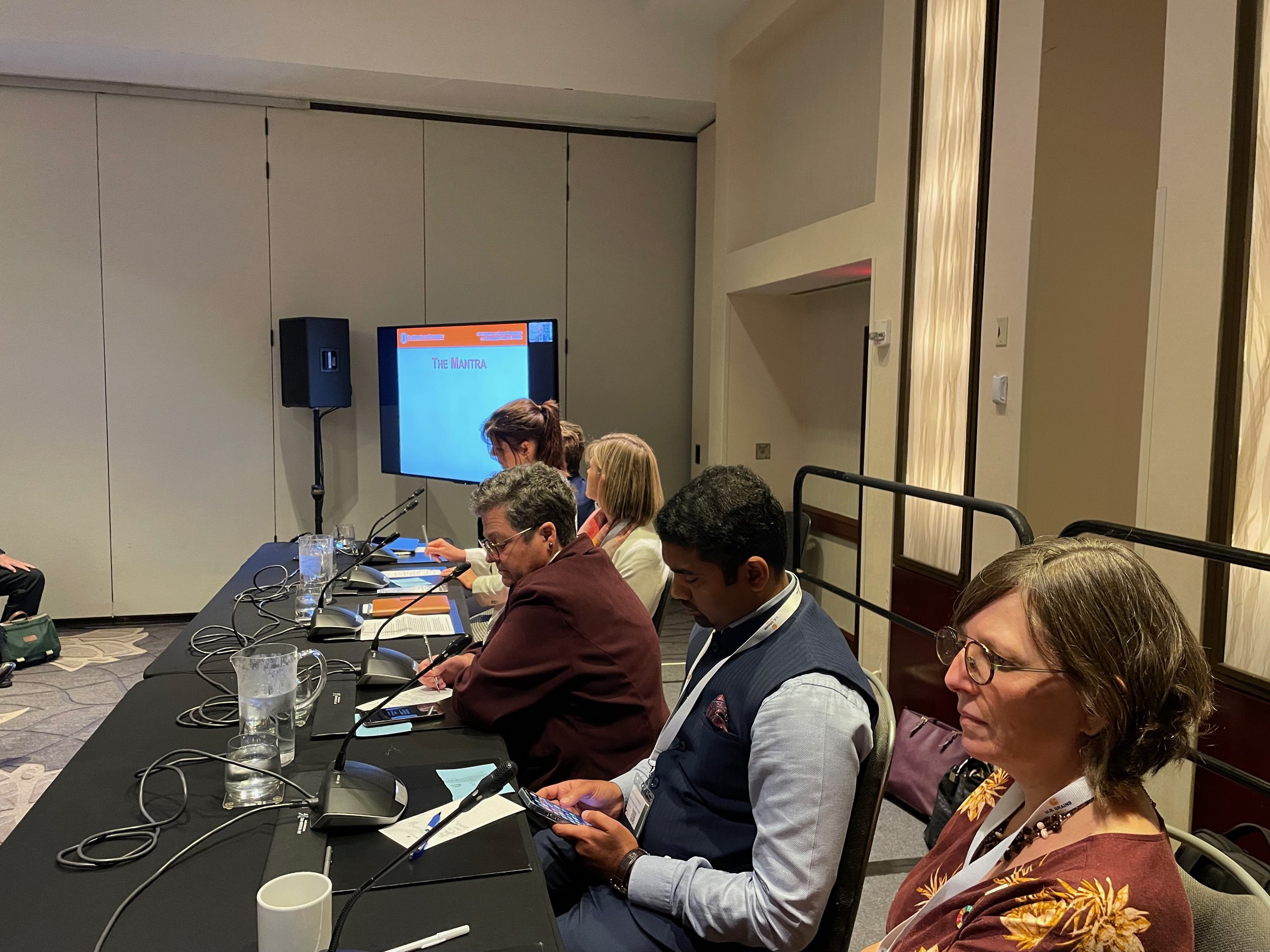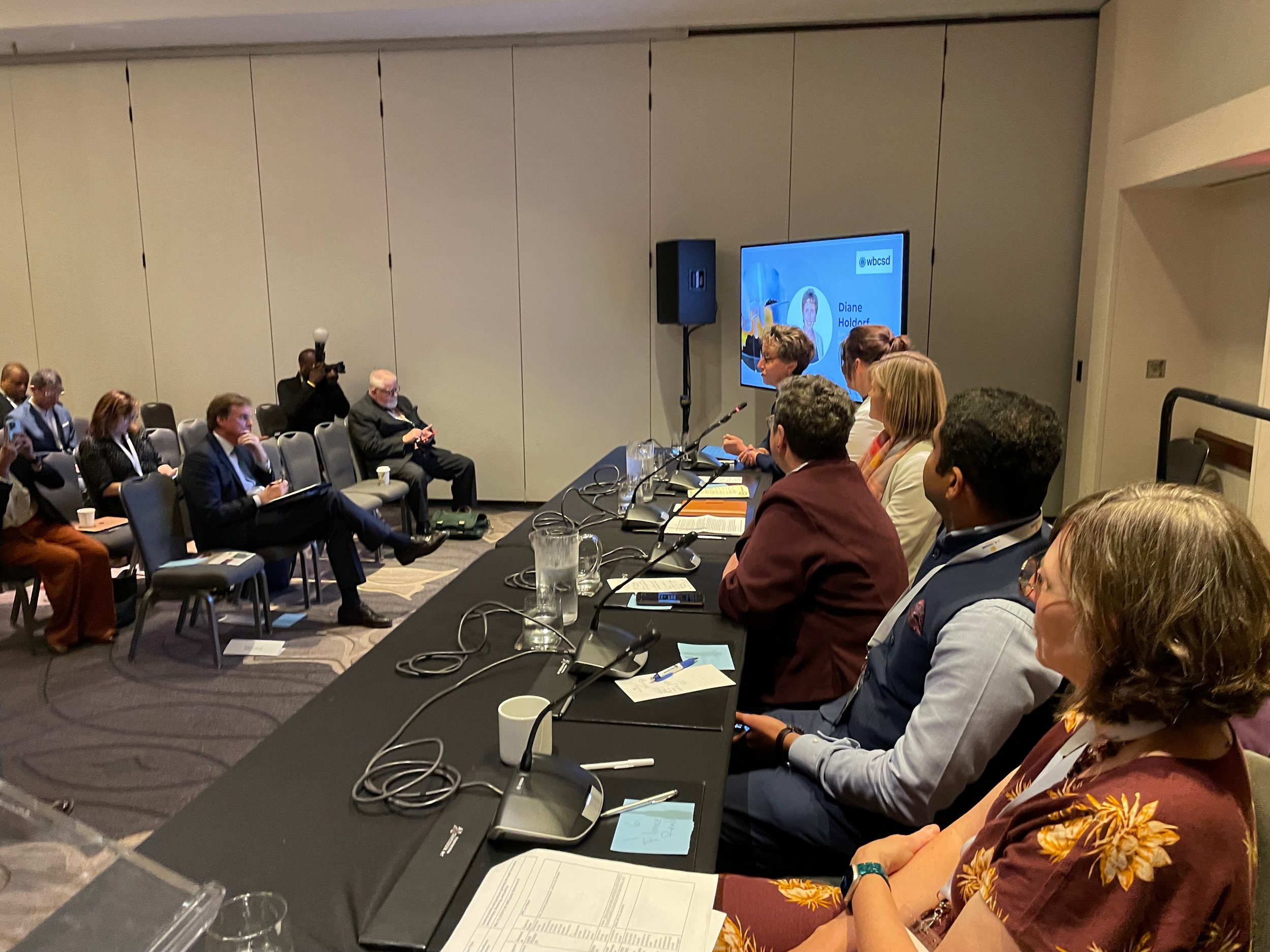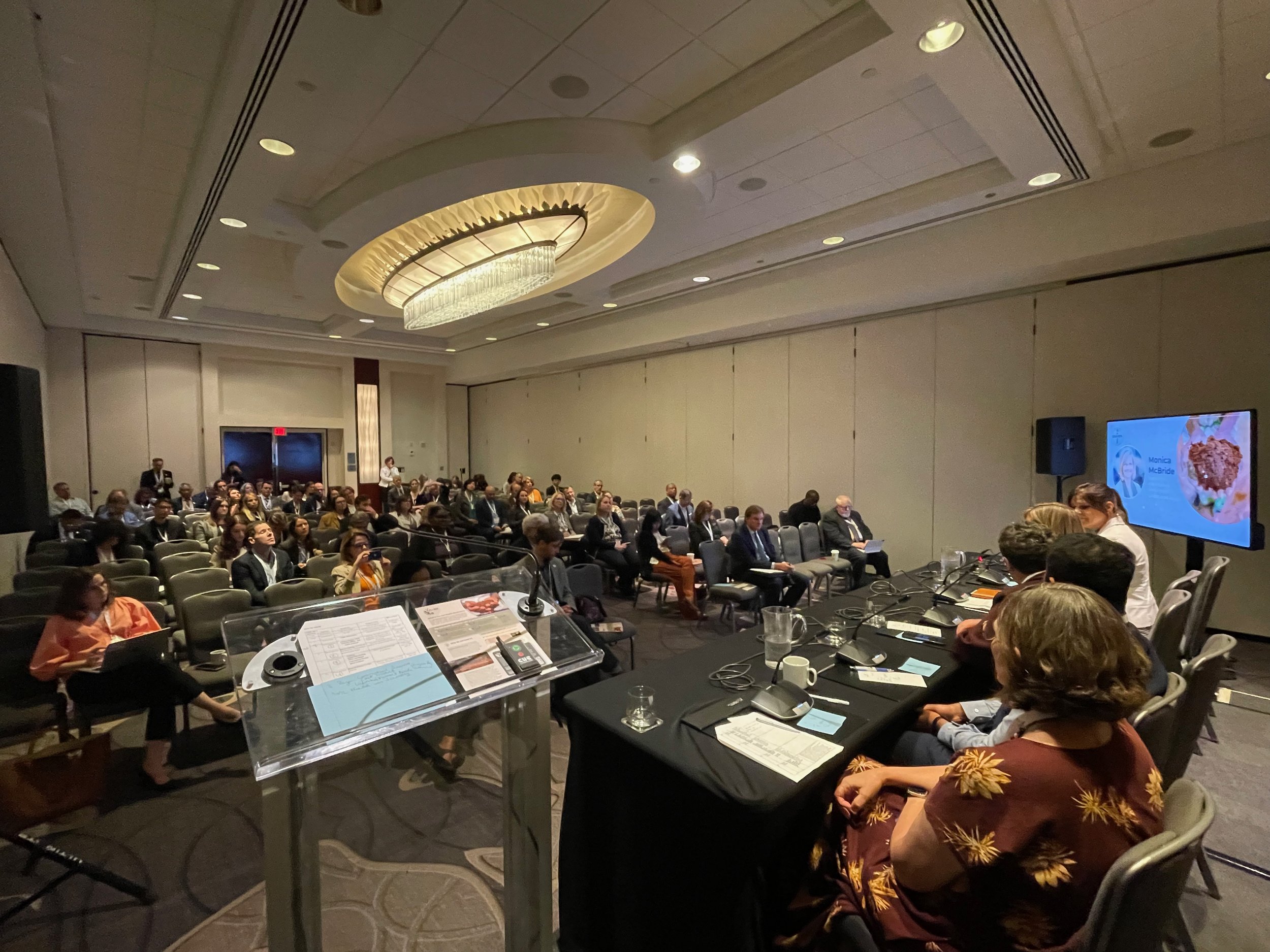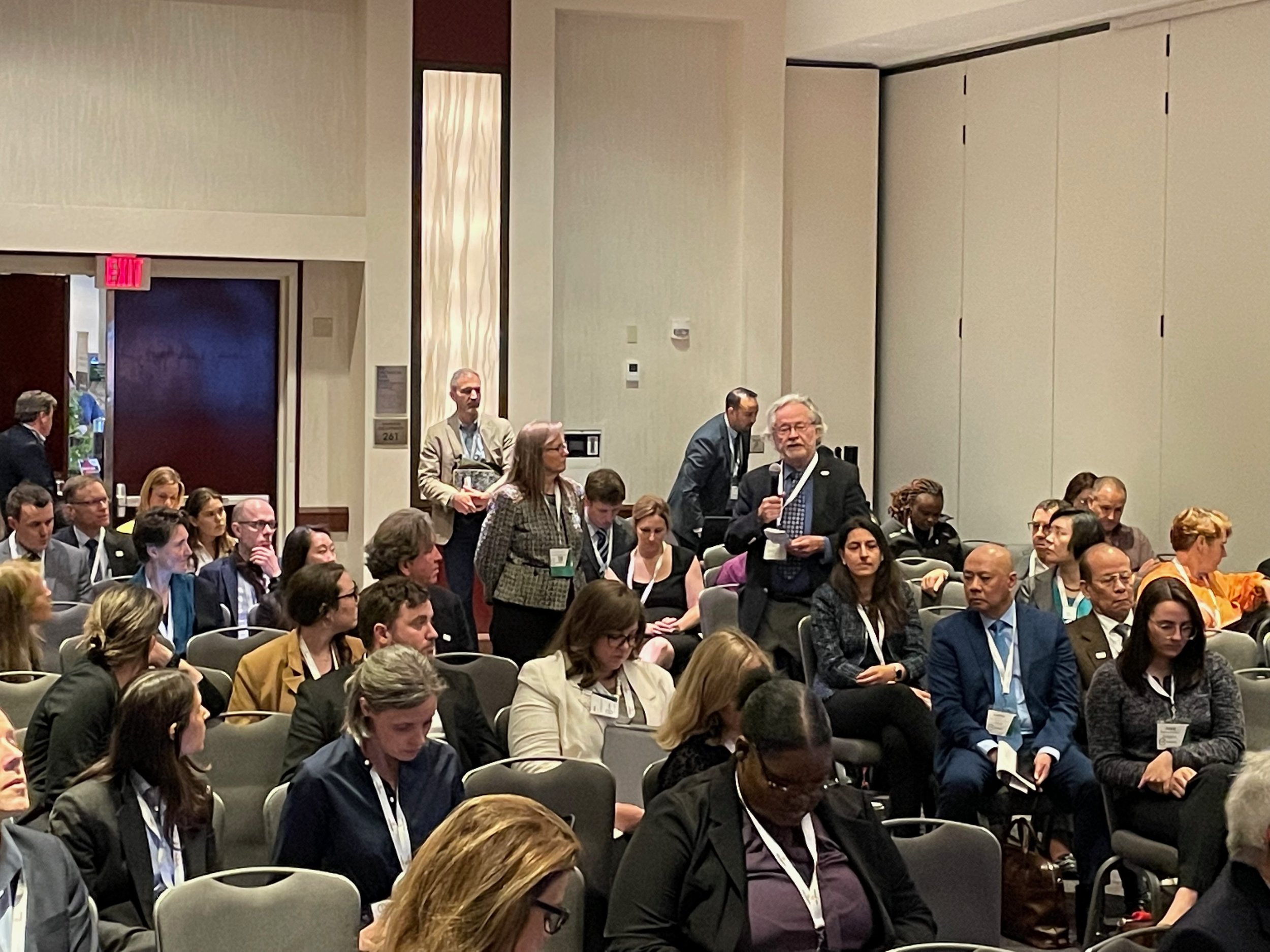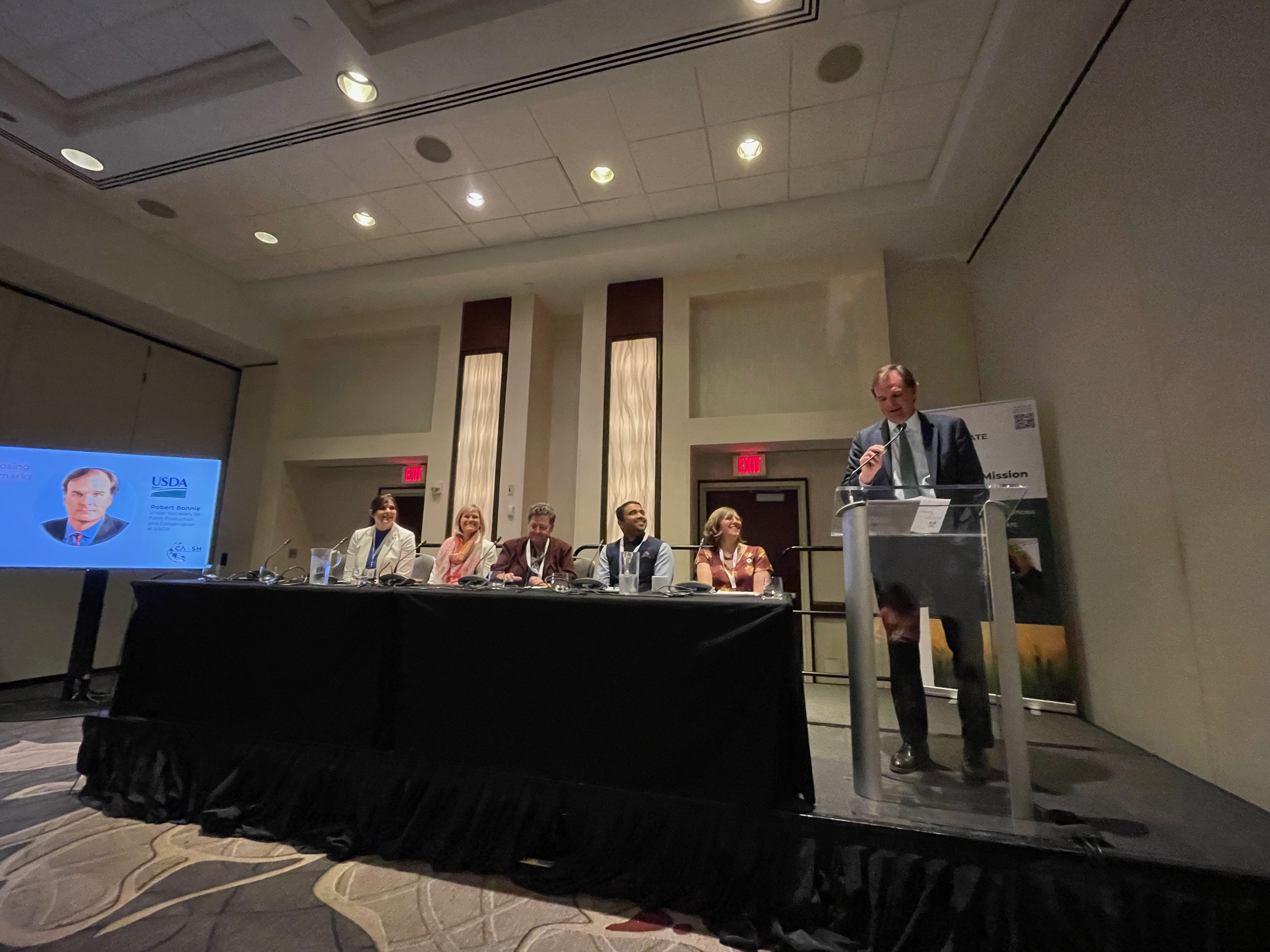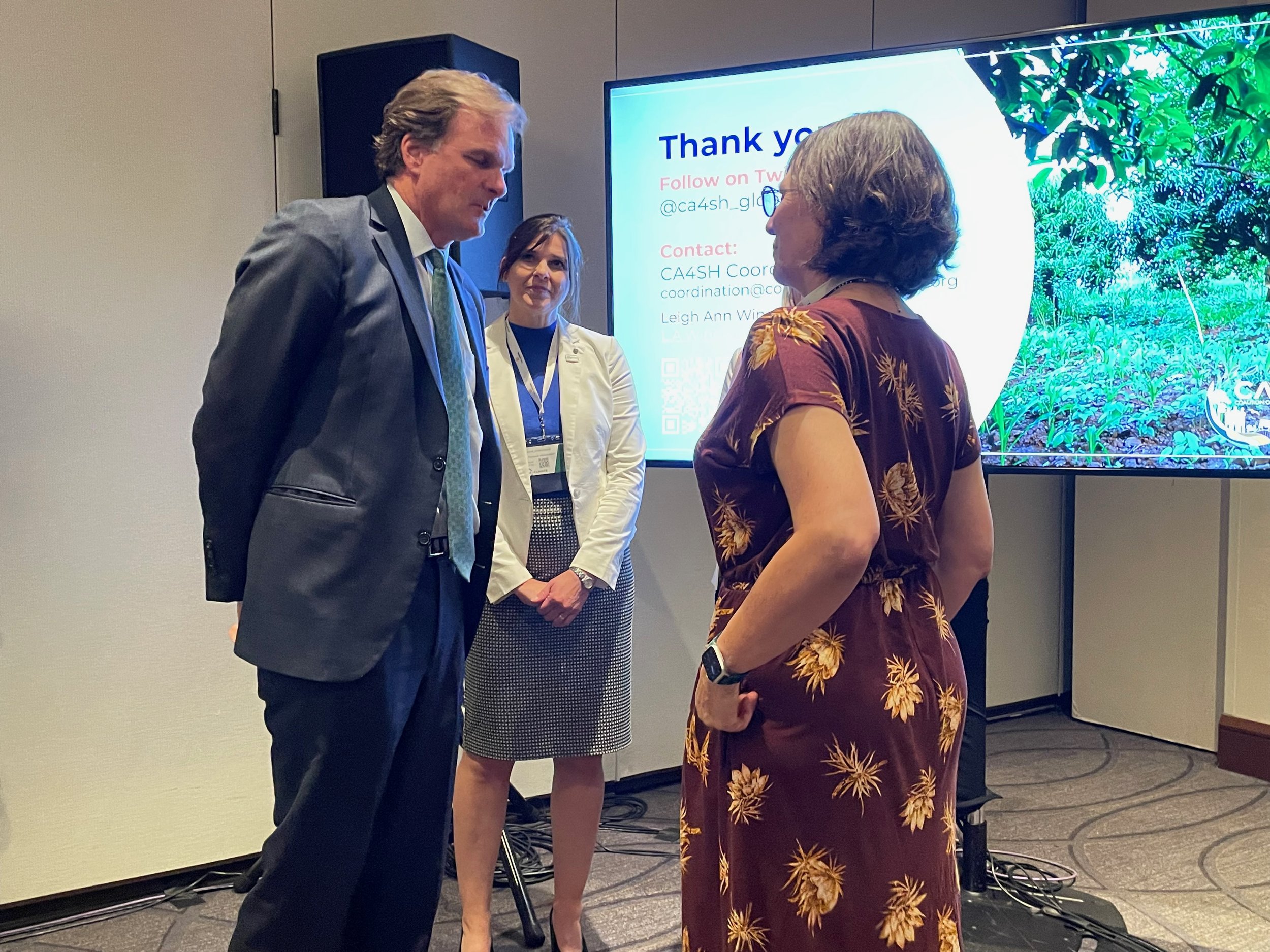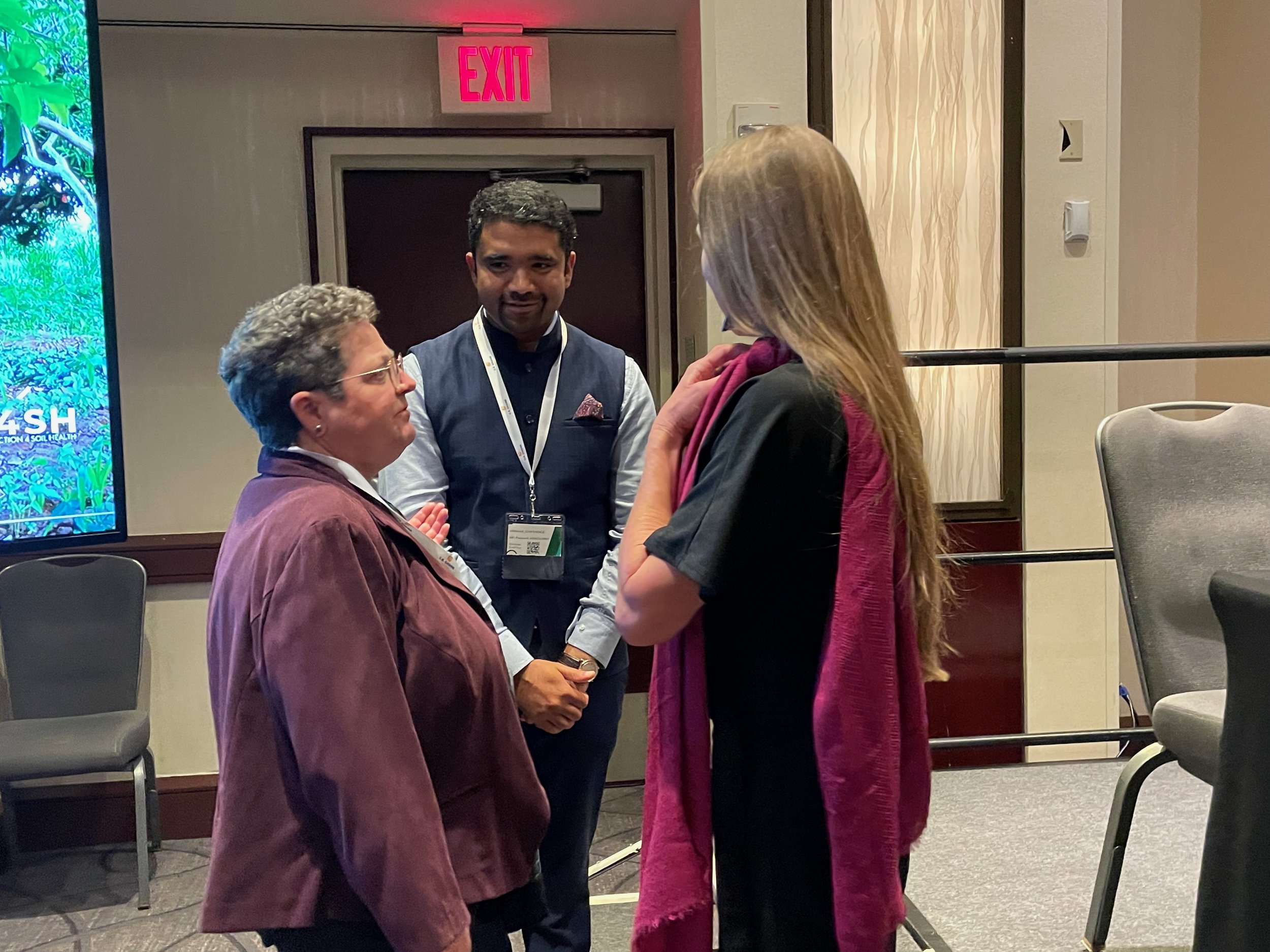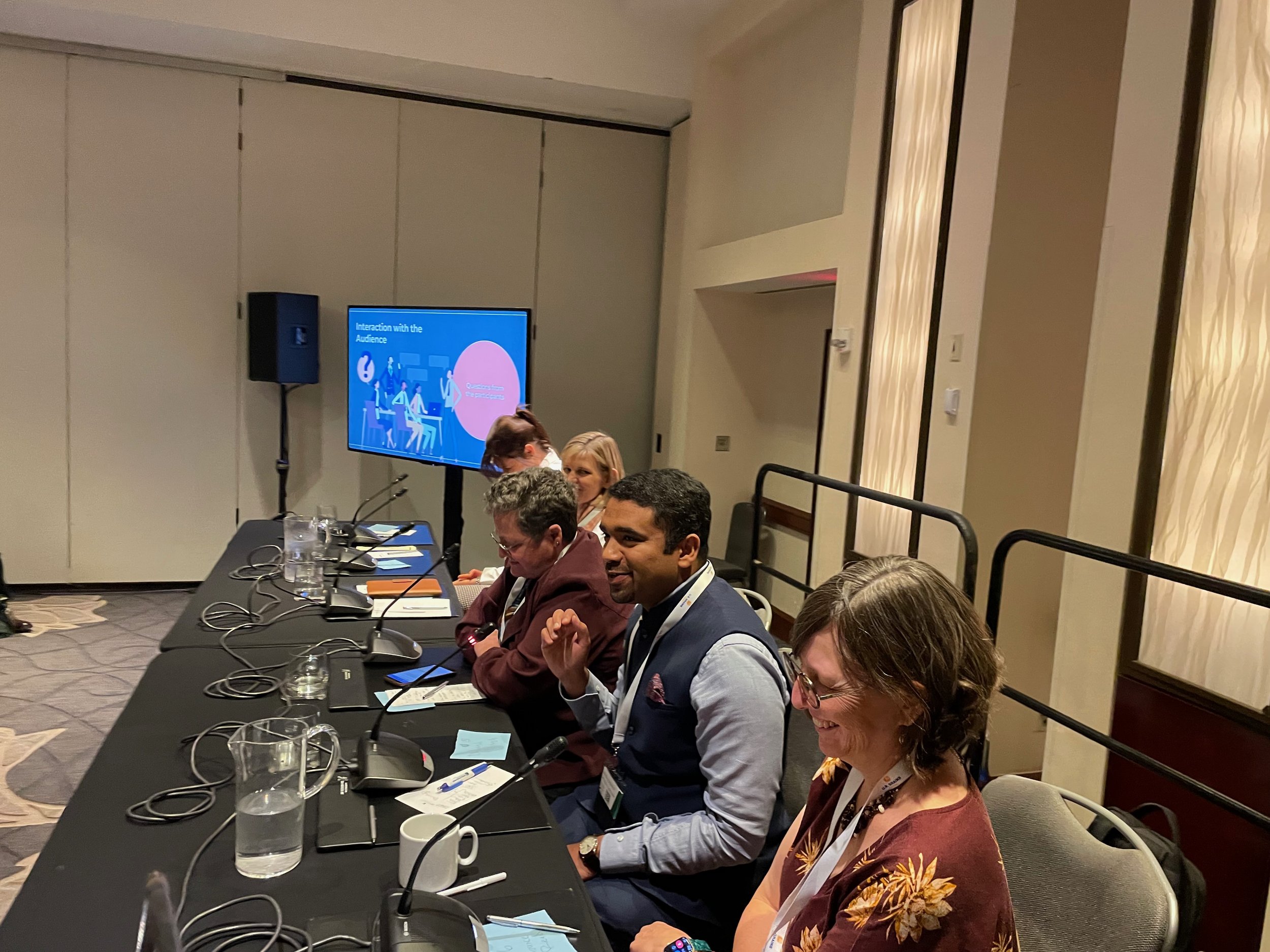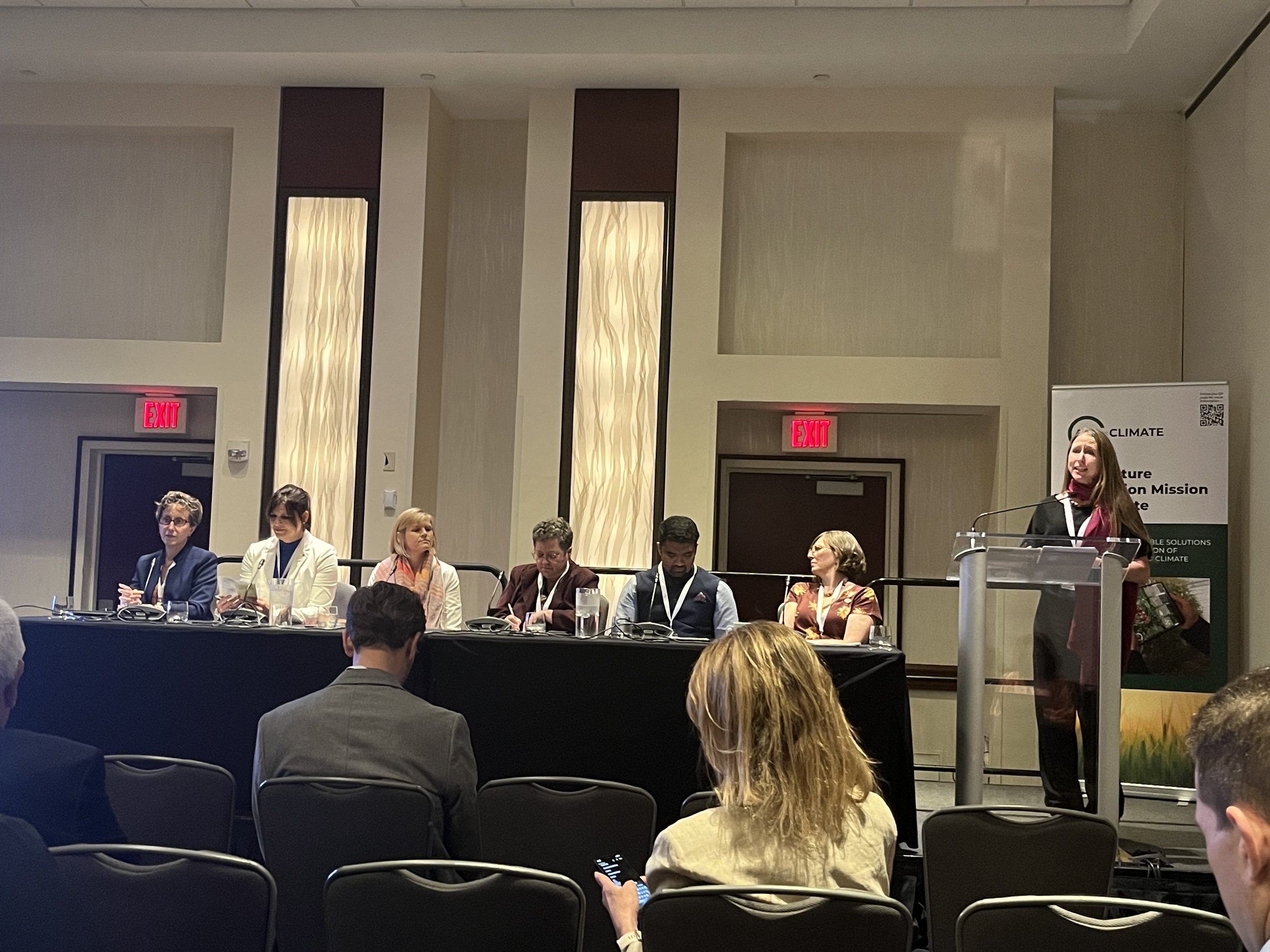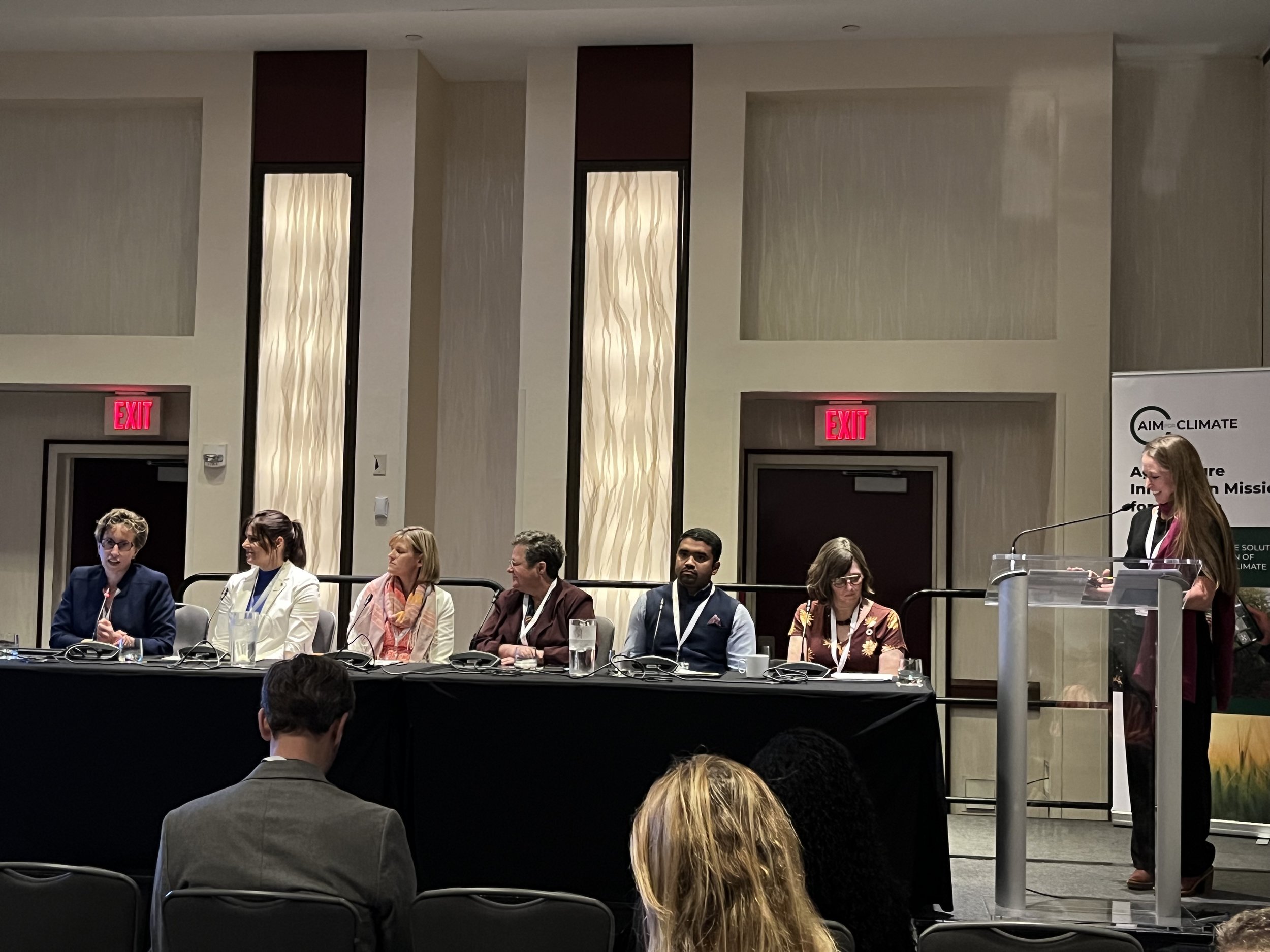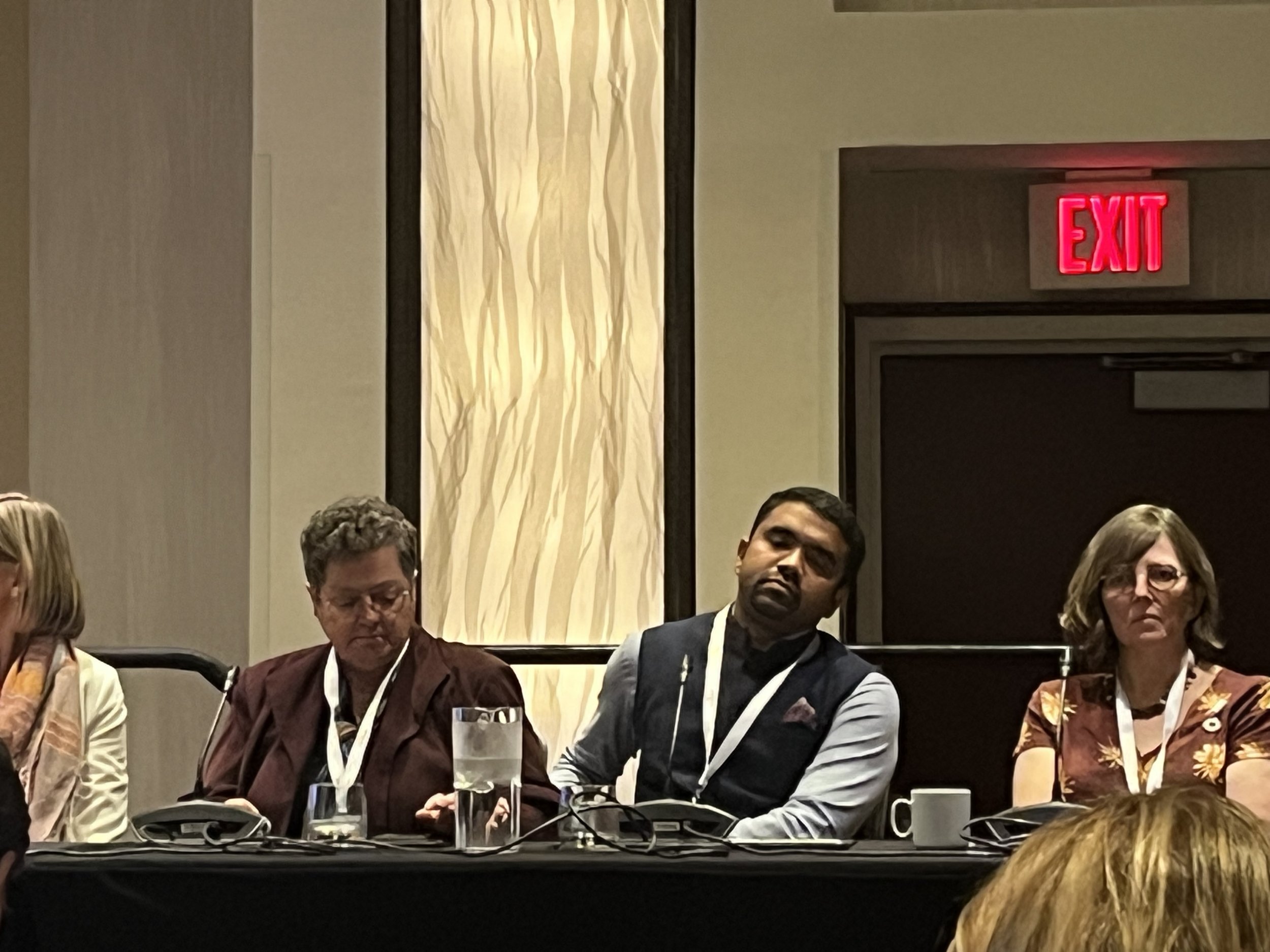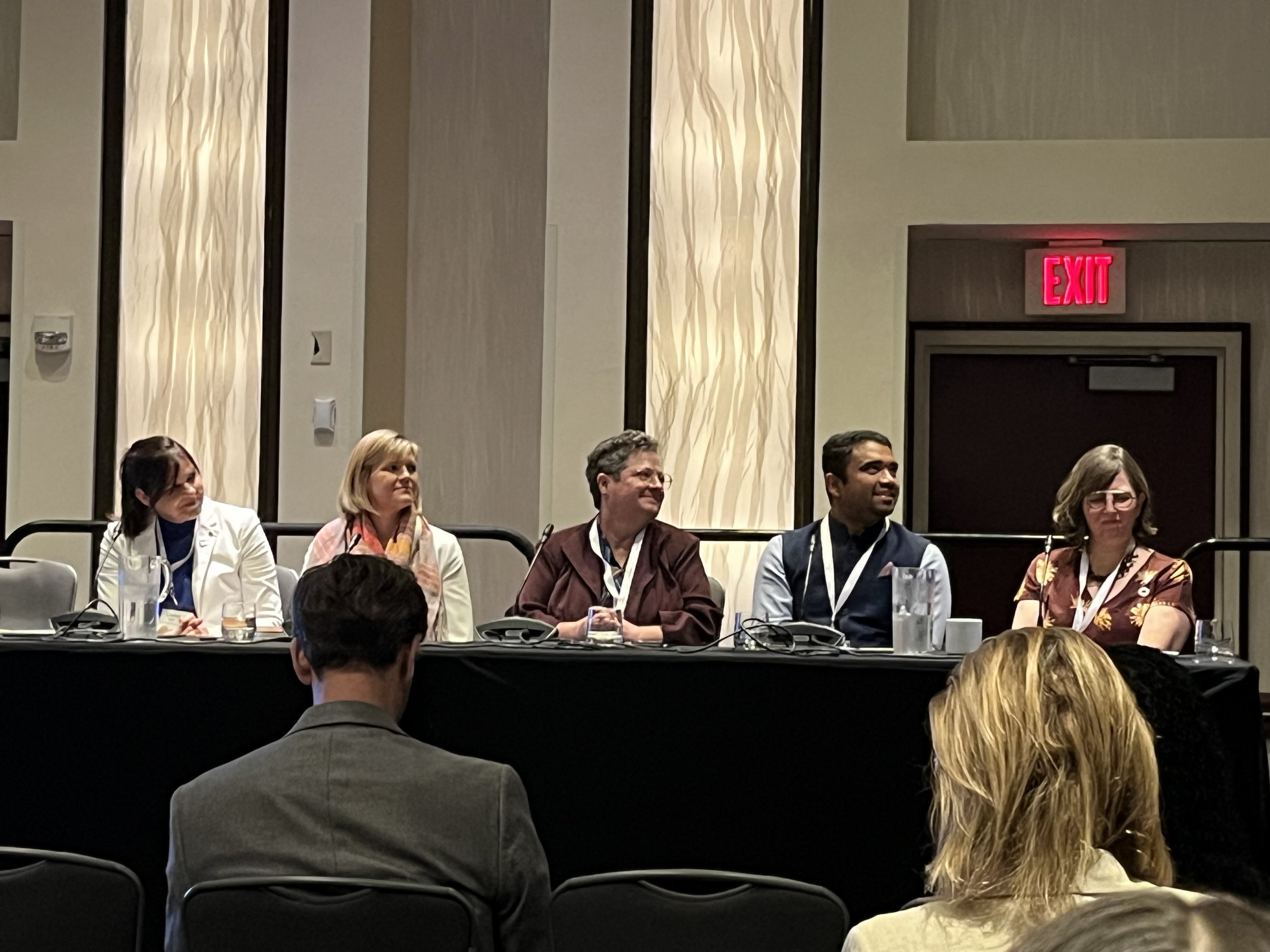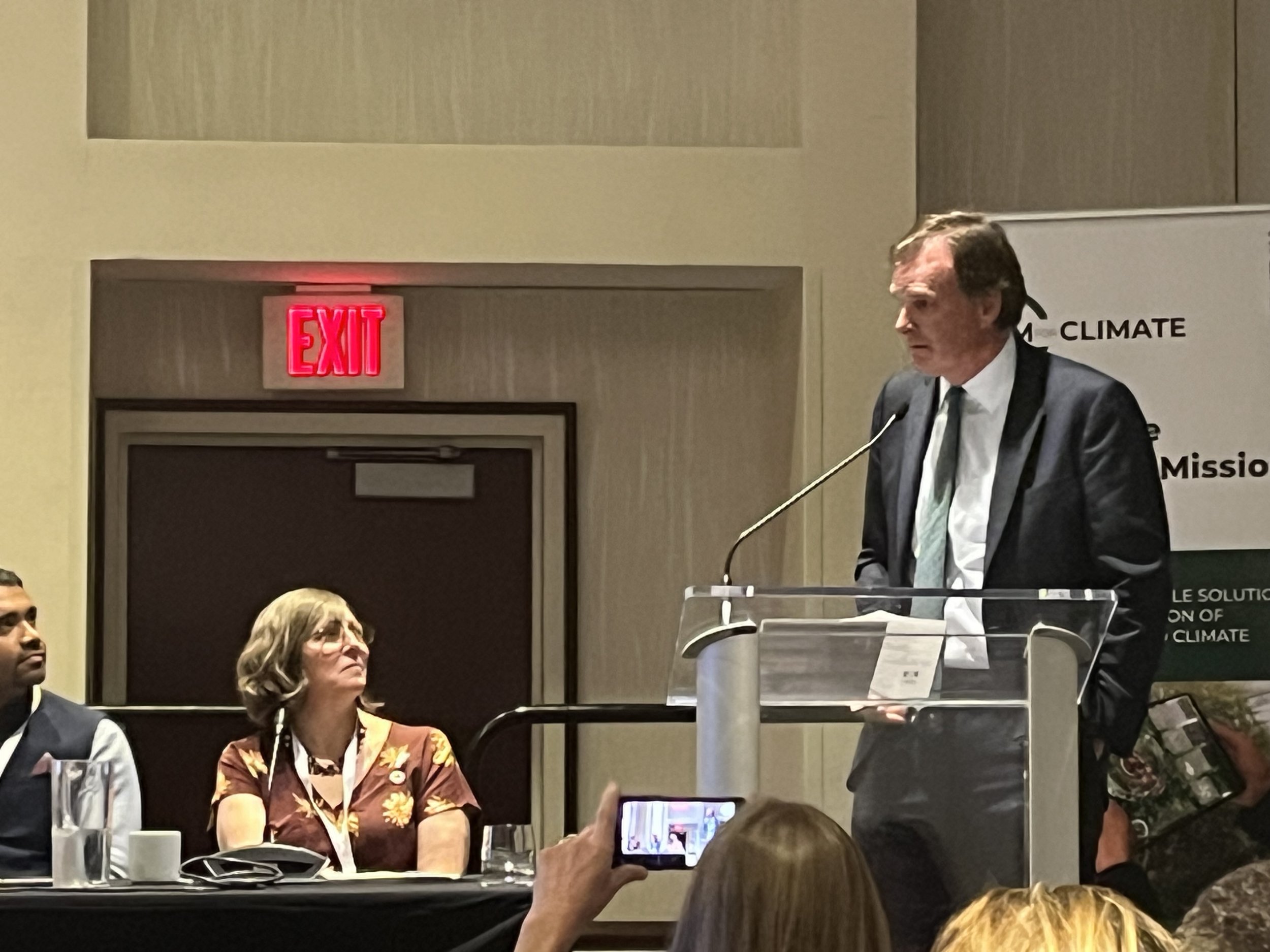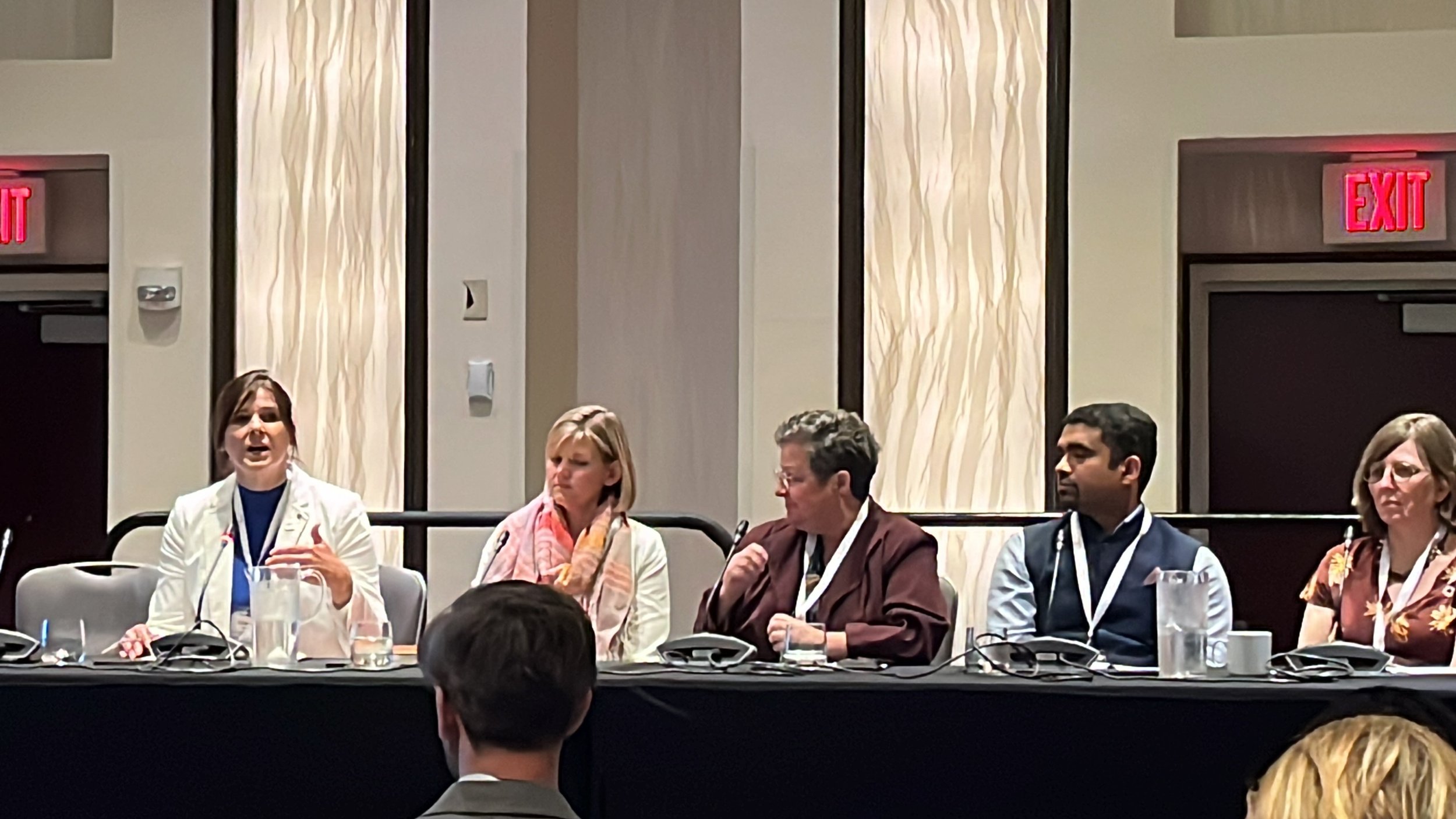CA4SH at the AIM for Climate Summit: Scaling healthy soil practices globally through innovative partnerships, financing and policy
10 MAY 2023: The Coalition of Action 4 Soil Health (CA4SH) hosted a Breakout Session at the AIM for Climate Summit in Washington, DC, USA. Global leaders from policy, industry, producer organisations, civil society groups, and scientists and researchers came together for the three-day Summit to drive their work on climate-smart agriculture and innovations in food systems.
The AIM for Climate Summit stems from the Agriculture Innovation Mission for Climate (AIM4C), an initiative that brings together partners across sectors and scales towards a common goal of building resilient food systems from the ground up. Soil is the foundation of our food systems, so they make regular appearances in AIM4C dialogue, and the Summit was no exception.
“Planting trees is a good way to pull some carbon, CO2 out of the atmosphere, but there’s three times as much carbon in the first metre of topsoil than in all the trees in all the vegetation combined,” Al Gore, former Vice President of the US, reminded audiences in the Opening High-Level Plenary. Al Gore went on to discuss the role farmers play in carbon sequestration, stressing the importance of incentives and support for transitioning to regenerative agriculture, as well as robust soil carbon monitoring practices.
“If we get a degree of reliability and confidence that we can actually measure how much soil carbon is being built up by farmers, we can pay them for it just the same way we see all this frenzy about carbon credits here, and there, that’s real sequestration.”
During the breakout session titled Scaling healthy soil practices globally through innovative partnerships, financing and policy, CA4SH members from various sectors discussed the roadmap for a soil health REVolution through our flagship initiative, the Soil Health RESolution. Dr Leigh Ann Winowiecki, CIFOR-ICRAF Soil and Land Health Global Research Lead and CA4SH co-lead, aligned the Soil Health Resolution with the objectives of the AIM for Climate Summit and presented the objectives of CA4SH during an introductory address. The Resolution aligns with the objectives of AIM4C, and is being put forward as a set of commitments for Member States to adopt at UNFCCC COP28 to enable and scale healthy soil practices with biodiversity, climate change, livelihoods, and water and food security at its core. Six CA4SH members participated in an expert panel, moderated by Dr Winowiecki, to highlight advancements in soil health monitoring, equitable financing, and a roadmap for the Soil Health Resolution at the national, regional and global levels.
Summary of Panelists’ Remarks
Diane Holdof, Executive Vice President, WBCSD
Question: How has WBCSD engaged with CA4SH and what is the opportunity for the Soil Investment Hub?
Answer: Diane highlighted the critical need to link innovation and business solutions to improve farmer livelihoods and incomes. She said this session is a milestone event for CA4SH - truly lifting the awareness of the important role of healthy soil for soil. She also talked about the advancements in defining and measuring soil health and the need for science-informed, key performance indicators (KPIs).
Dr Cristine Morgan, Chief Scientific Officer, Soil Health Institute
Question: Describe how the Soil Health Institute is partnering with the private sector to implement sustainable soil management on the ground.
Answer: Dr. Morgan highlighted several ongoing initiatives with the private sector to scale regenerative agricultural interventions in the USA. She stressed the need for scaling- and that we need locally relevant and scalable solutions. She also talked about the exciting work SHI is doing with farmers and goal-setting exercises to ensure their projects are meeting the needs of farmers.
Monica McBride, Director of Partnerships – Environment & Landscapes, Bayer
Question: How does Bayer place farmer needs at the centre of soil health interventions?
Answer: Bayer is addressing issuing of profitability for farmers. They have a new programme called BayerCarbon where they are paying farmers to adopt regenerative agricultural practices. Monica highlighted the importance of understanding the needs of the farmer and working to address them. She mentioned the importance of collaborating across stakeholders, for example, within CA4SH, to bring together the private sector, research, and multiple sectors to develop solutions.
Dr Sieglinde Snapp, Principal Scientist, International Maize and Wheat Improvement Center (CIMMYT)
Question: What are the role of CGIAR programmes and your innovation sprint to scale soil health?
Answer: Dr. Snapp kicked off her remarks with one word: HOPE!
She said she is hopeful for the trajectory and momentum around soil health. She highlighted numerous opportunities for CA4SH to scale interventions on the ground as well as how CA4SH continues to shape the conversation to bring soil health to the forefront. She highlighted the role of digital tools, especially in monitoring soil health. She also talked about transdisciplinary approaches and the need to be inclusive, for example for women and youth.
Dr Dhanush Dinesh, Founder of Clim-Eat
Question: What are opportunities at COP28 to bring soil health and the food systems agenda forward?
Answer: Dhanush started by talking about the UNFCCC COP process and the need to be pragmatic. He highlighted three key areas that CA4SH could address:
1) Innovation - the need for innovative monitoring within Measurement, Reporting, and Verification (MRV)
2) Adoption - there is a real adoption gap and how can innovative business models be part of the solution
3) Leadership- we need strong leadership to keep the collective movement on soil health going forward.
Florence Reed, Founder & Director of Strategic Growth, Sustainable Harvest International
Question: What is the role of farmers on the ground?
Answer: Florence highlighted the need to work with smallholder farmers. She talked about the various practices including agroforestry and agroecology which are sequestering carbon- on smallholder farms. She shared updated figures of the thousands of farmers Sustainable Harvest International is working with to scale these technologies for nature and people. She talked about how CA4SH is bringing together organizations, globally to share knowledge and scale innovations.
A bright future for the soil, agriculture and climate nexus
Wrapping up the session, Under Secretary for Farm Production and Conservation at USDA Robert Bonnie highlighted the alignment of the climate and agricultural agendas, and shared his optimism on linking climate policy with the needs of American farmers. “Our approach in the US, in this administration, is about voluntary, incentive-based, collaborative approaches on the ground. It’s about maintaining agricultural productivity,” he added. “While we think about climate, we’ve got to feed 10 billion people, and so productivity and innovation really matters.” He notes that while conversations around climate policy can be contentious, he has personally witnessed more and more farmers embracing climate-smart agricultural practices during his time in office. He underscored the opportunity to meet farmers’ scepticism on climate policy by aligning it with the agricultural agenda and providing support to rural people.
In his closing remarks, Robert Bonnie also connected panellist Florence Reed’s comments on diversity and inclusion in scaling soil health, noting that “if you know USDA, you know the challenges we’ve had with Black farmers, Native-American farmers, and making sure that, as we design climate policies, soil health policies, that everybody gets to play.” The soil health movement is nothing if it’s not equitable, calling for the inclusion and empowerment of all. This is best exemplified in the Mantra shared by CA4SH co-founder Dr Rattan Lal in his opening remarks, which underscores all of CA4SH's efforts toward a more resilient food future with healthy soils at its foundation:
“Healthy Soil = Healthy Diet = Healthy People = Healthy Ecosystems = Healthy Planetary Processes! With this adoption, the soil health movement will revolutionise food and nutrition security and promote peace, globally.”
What’s next for the Soil Health Resolution?
The Soil Health Resolution was developed to advance comprehensive policy action and provide a set of commitments for Member States to enable and scale healthy soil practices to mitigate and adapt to climate change, with the aim of ensuring soil health is integrated into the UNFCCC key negotiating tracks. The Road to COP28 involves an internal initiative to facilitate Member States in supporting the Resolution, as well as engage in dialogue to support the Resolution moving forward. Read our flyer to learn more about the Resolution, check our Soil Heath Resolution page for regular updates, and keep an eye out for upcoming events and dates like these:
We are bringing the Soil Health Resolution to member states at the Subsidiary Body for Scientific and Technological Advice (SBSTA) meeting in June. CA4SH is hosting a luncheon in collaboration with the International 4 per 1000 Initiative and the British Society of Soil Science on 25 June 2023. At the luncheon, experts will reflect on strategic policy entry points and the key critical dialogue on how soil is reflected within the key UNFCCC negotiation texts.
CA4SH and the global community will celebrate World Soil Day during COP28 (30 Nov - 12 Dec) as this year, it falls on 5 December. Visit CA4SH at the Food Systems Pavillion!
The CA4SH coordination team is organizing and hosting virtual policy roundtables to better support countries in advocating for soil health through evidence-based policy. Visit the CA4SH policy pages and sign up for our newsletter to be notified of the dates to come.
Event photos
